calsfoundation@cals.org
Portland (Ashley County)
| Latitude and Longitude: | 33°12’00” N 091°31’55” W |
| Elevation: | 115 feet |
| Area: | 1.07 square miles (2020 Census) |
| Population: | 325 (2020 Census) |
| Incorporation Date: | October 18, 1893 |
Historical Population as per the U.S. Census:
|
1810 |
1820 |
1830 |
1840 |
1850 |
1860 |
1870 |
1880 |
1890 |
1900 |
|
– |
– |
– |
– |
– |
– |
– |
– |
– |
426 |
|
1910 |
1920 |
1930 |
1940 |
1950 |
1960 |
1970 |
1980 |
1990 |
2000 |
|
823 |
618 |
543 |
518 |
517 |
566 |
662 |
701 |
560 |
552 |
|
2010 |
2020 |
|
|
|
|
|
|
|
|
|
430 |
325 |
|
|
|
|
|
|
|
|
Portland is a small Delta town in Ashley County. It began as a settlement on Bayou Bartholomew and became a steamboat port, an agricultural center, and a railroad town.
Louisiana Purchase through Early Statehood
The earliest known settlers were John P. Fisher and William Brady, who were there in the 1830s. Fisher arrived by 1833, established a plantation, and constructed a two-story house on the west side of the bayou. A short distance down the bayou from Fisher’s house, a small settlement emerged on the opposite side. Steamboat captains called this stopping place “the port,” and upon establishment of a post office in 1857, it was named Portland.
The bayou village consisted largely of mercantile stores that received their goods from steamboats and served the plantations and smaller farms. Brothers John Cicero Bain, James Oliver Bain, and their half-brother, Dolphus Leroy Bain, installed a steam gin and traded in cotton and cottonseed. A Mr. Culpepper operated a sawmill; he cut the lumber for Fisher’s house. A one-room school building and a church stood on a bluff facing the bayou. Since circuit riders served the church in 1852, it may be assumed that the church was Methodist. The location, known as Alligator Bluff, is the site of Portland Cemetery. A Masonic lodge received a charter in 1860.
Civil War through Reconstruction
Progress in the village halted abruptly with the Civil War in 1861, as men left their occupations to join Confederate forces. The area experienced little war-related activity other than Union raids for supplies. Confederate forces burned Fisher’s cotton crop in 1862 before Union troops could secure it. A Union raid took place in January 1865. Colonel Embury D. Osband marched 2,621 Federal cavalrymen of the Third United States and Colored Cavalry from the Mississippi River to Bayou Bartholomew and followed it downward. At Holloway’s Ferry, just north of Portland, they captured prisoners, took horses and mules, and burned a gristmill. At Portland, they destroyed commissary stores and an ammunition supply depot.
The war ended, but troublesome times did not. During Reconstruction, planters had to use the Freedmen’s Bureau to hire their labor force, which was formed by freed slaves. The county was under martial law in 1868, and more rebellion ensued. The Ku Klux Klan formed to retaliate against freedom for slaves. Cola Camak recalled those years: “Terror reigned supreme and one never knew what new horror the next day would bring. Carpetbaggers and jayhawkers were eternally trying to incite race riots and colored uprisings.” Tensions eased after the 1872 election of county officials who were local residents. They formed an alliance with Black leaders, who enlisted members of their race to oppose the radical Republicans.
Post-Reconstruction through the Gilded Age
Normalcy gradually resumed, but another major change was in store. The Houston, Central Arkansas and Northern Railroad reached the area in 1890. Bayou merchants began to move two miles west to be by the railroad. Three stores opened the next year and two more in 1892. The town incorporated in October 1893. Instrumental in incorporation were Robert Aaron Pugh, Joseph Cicero Bain, and Edward J. Camak.
Agriculture continued to be the basis of infrastructure, but the railroad soon attracted the timber industry. William Harrell Wells was in the barrel stave business by 1896, and the Stell & Boothby Stave Mill was open by early 1897. The first Northern-based concerns were American Forest Lumber and Wheeler Cypress Lumber Company.
In 1895, an African American minister named Frank King was lynched after shooting one of his deacons. In 1902, a Black man named Walter Sullivan was lynched for allegedly shooting a prominent merchant. In 1909, a Black man named Joe Blakely was lynched after being accused of being an accessory to murder. His brother, Sam Blakely, the alleged murderer, escaped but was later captured; no record of his death remains.
Early Twentieth Century through the Modern Era
In the first decade of the 1900s, four large hardwood mills were in operation. When most of the timber was cut by the end of World War I, the mills began to close. Despite the loss of the timber industry, agriculture thrived, and the town continued to grow until the Great Depression. Many small businesses closed, and small farmers began to sell their land in the 1930s. This continued through World War II. With the loss of tenant labor during the war and the emergence of farm mechanization, the surviving large mercantile businesses gradually closed.
Portland attracted significant attention following the December 5, 1965, murder of fourteen-year-old Lee Edward Culbreath, an African American youth, by Ed Vail, who was alleged to have connections to the Ku Klux Klan. Vail was later convicted of second-degree murder.
In the early twenty-first century, Portland had two banks and two farm equipment dealers that served the surrounding area, which is composed of some of the largest, oldest, and most profitable farms in the state.
Education
A school was built soon after the town moved from the bayou location to the railroad. This two-story, four-room frame building was replaced in 1902 by a modern two-story brick structure. It was enlarged in 1907 and contained ten classrooms and an auditorium. In 1947, the school built outlying buildings for industrial arts, home economics, and more classrooms. The school was demolished and replaced in 1966. Three public schools for Black children were established around 1907. A high school for Black students was also in place by then. A new school was constructed in 1930. Portland Elementary School received the Title I Distinguished School Award from the U.S. Department of Education for improvement in test scores in May 1998.
Attractions
The town’s oldest structure is the jail, built by 1899. The walls of the brick “calaboose” are more than two feet thick, and the roof is also brick. The building is behind the old Portland (now Parkway) Bank downtown. Many elegant houses once graced the tree-lined streets, but fire destroyed the wooden structures. The Joel Wilson Pugh House, the Jess Dean House, and the Henry Naff House are on the National Register of Historic Places. Architect Charles Thompson designed the Pugh and Dean houses. The facade of the Parkway Bank, built in 1900 and the first bank in the county, is on the Arkansas Register of Historic Places. The John Fisher House across the bayou from the site of old Portland is in good condition and is on the National Register.
For additional information:
DeArmond-Huskey, Rebecca. Bartholomew’s Song: A Bayou History. Bowie, MD: Heritage Books, 2001.
———. Beyond Bartholomew: The Portland Area History. Conway, AR: River Road Press, 1996.
Rebecca DeArmond-Huskey
Wilmar, Arkansas
 Transportation
Transportation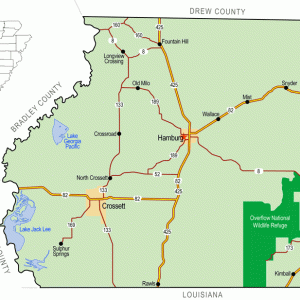 Ashley County Map
Ashley County Map 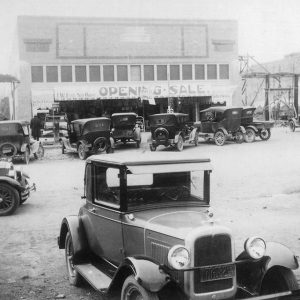 J. W. Pugh Mercantile
J. W. Pugh Mercantile 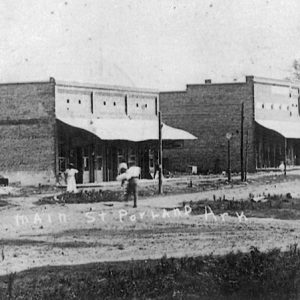 Portland Main Street
Portland Main Street 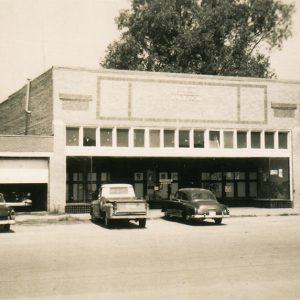 Portland City Hall
Portland City Hall 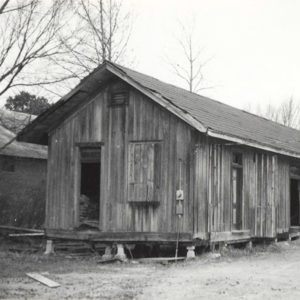 Portland Depot
Portland Depot 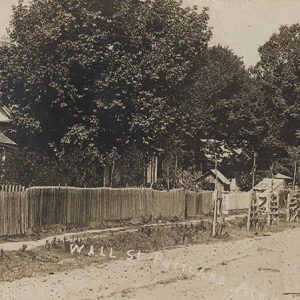 Wall Street
Wall Street 




I grew up in that small town, never knew it had such a rich history. Lived there from 1955 to 1974, then went off to college in New Mexico. Came back in 1978 and farmed cotton until 2000. It was a great place to grow up. Everyone knew everyone, so you couldn’t get away with anything. That town will always have a special place in my heart.